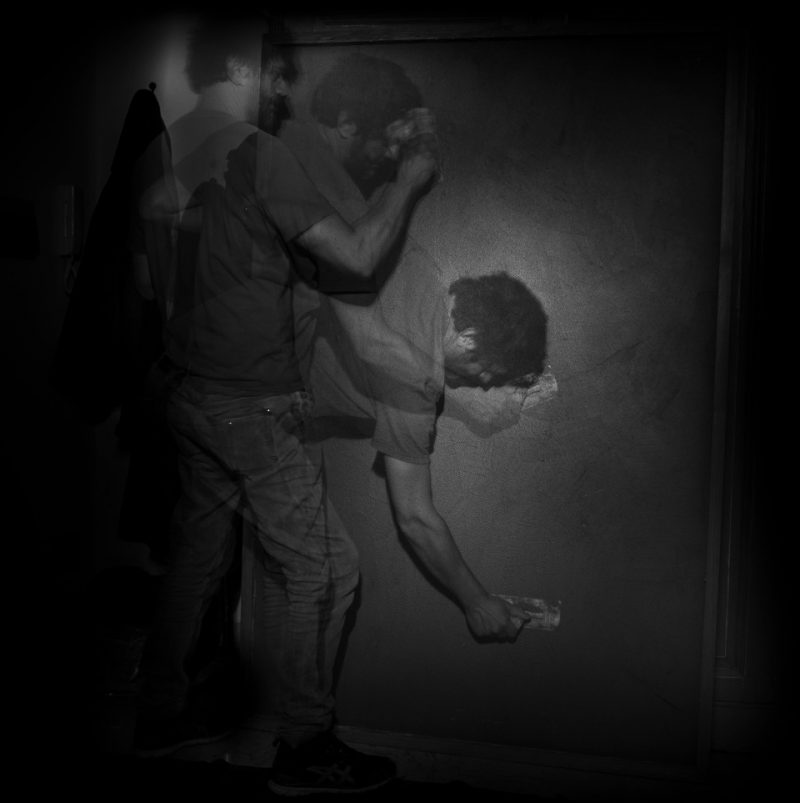Andrea Capanna nasce nel 1969 a Roma, dove vive e lavora. Laureato in Teorie e Pratiche dell’Antropologia presso l’Università La Sapienza, dopo aver frequentato tra il 1994 e il 1996 l’Accademia di Belle Arti di Roma.
“Il mio lavoro sui “muri” è un percorso di ricerca delle infinite opportunità tecniche, concettuali ed estetiche che offre questa superficie. Su di essa si deposita la memoria di una storia, si stratifica il vissuto di un corpo che mostra e rivela.
E’ un viaggio a ritroso di un vissuto che viene liberato e mostrato per sottrazione. Il soggetto prende forma dalla rimozione dei diversi strati che lo compongono fino a rivelare la genesi di sé e della sua storia, come un intonaco che cade usurato dal tempo e scopre un vecchio muro, rivelando la sua origine per raccontarci la sua epoca. Utilizzo cemento, calce, sabbia e intonaco, depositati e dipinti per strati, lavorati anche con carta vetrata, spatole e spazzole di acciaio.
Nella mia recente serie, Low Profile, questa tecnica incontra il “motivo” del ritratto di profilo, un genere poco utilizzato ma largamente in uso in epoca rinascimentale, nell’antica tradizione dei cammei e nelle monete.
Qui è la linea di contorno del corpo, con il suo rigore oggettivante, a contenere la profondità, Low, delle stratificazioni rivelate, le sue pulsioni e i suoi desideri. I successivi piani sono liberati in un movimento imprevedibile, immaginabile ma non programmabile, seguendo lo scontro e l’incontro tra il soggetto e l’oggetto, la carne e il corpo”.
Andrea Capanna was born in Rome in 1969, where he lives and works. Graduated with a degree in “Theories and Practices of Anthropology” at “La Sapienza” University, after having attended the Accademia di Belle Arti from 1994 to 1996.
“My artwork on “walls” is a research of the infinite technical, conceptual and aesthetic opportunities offered by this surface. The memories of a story deposit themselves on this and the life lived by a body that comes to the surface and reveals itself, stratifies on this surface.
It is a backward journey of what has been lived, what is freed and comes to bear by removing the outer layers. The object takes shape by removing different coatings to the point of revealing its genesis, like plaster worn by time that falls off an old wall, to uncover its origins thus narrating its time.
I use cement and lime, sand and plaster which I deposit and paint in layers, moulding with sandpaper, spatulas and steel brushes.
In my recent series, “Low Profile”, I apply this technique to the profile portrait, a motif rarely used today but once widely practised, particularly during the renaissance period and in the ancient tradition of cameos and coins.
In this case the outer line of the body, with its austere rigour, contains profundity, the ‘low’ layers that are revealed are its impulses and desires. The inner layers are freed in an unpredictable action, which one can imagine but not plan, following the clash or union of subject and object, body and flesh”.
